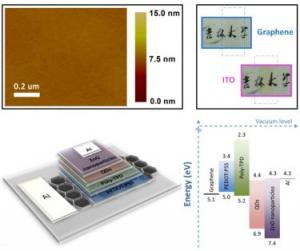Graphene bulb demonstration
The National Graphene Institute was recently opened in the UK, in an official ceremony that also included another intriguing event.

Professor Sir Kostya Novoselov demonstrated to the Chancellor of the Exchequer George Osborne the graphene light bulb, which was mentioned to be set to launch later in 2015. While the price is yet unknown, it is rumored to be relatively low-price, cut energy use by 10% and last longer owing to its conductivity.







